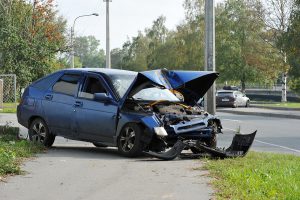The Top Car Accident Causes In Florida
 Michael Babboni
Car Accidents
Unlike many other states in the country, Florida gets the benefit of incredibly mild winters, with pleasant sun, and no snow. As a result, we not only have a lot of heavy traffic throughout the year, including motorcycles that may be put away in other states during the winter season, we get huge year-round visitors as well. That means our roads are much busier than other states, on average, both regarding traffic, and, unfortunately, traffic accidents.
Michael Babboni
Car Accidents
Unlike many other states in the country, Florida gets the benefit of incredibly mild winters, with pleasant sun, and no snow. As a result, we not only have a lot of heavy traffic throughout the year, including motorcycles that may be put away in other states during the winter season, we get huge year-round visitors as well. That means our roads are much busier than other states, on average, both regarding traffic, and, unfortunately, traffic accidents.So with so many cars on the road on any given day, what are types of accidents that are the most common here? Here’s what you should be keeping an eye out for when you’re on the road.
Single Vehicle Accidents
This type of accident is where a vehicle loses control in some fashion, and may even end up off the road, hitting something else, such as a tree, going into a ditch, or, in some extreme cases, even crashing through a home. In most cases of a single vehicle crash, because no other vehicle is involved, there are higher odds that the driver him or herself may be at fault, but that’s not always the case!
In some instances, the cause of the accident may be a result of poor road conditions that haven’t been properly addressed. For example, there’s a sharp turn that is normally signaled to drivers by a sign, and that sign has been taken down, and not replaced. If a driver doesn’t brake in time and take the turn more slowly, that may be the fault of the city or state for not giving sufficient warning by replacing the sign. It’s true that in the majority of cases, a single vehicle accident can often be traced to the driver, but if there are definitely cases where the road—not the person behind the wheel—was the culprit.
Side-Collisions
The side-collision, or “sideswipe” is when the side of one vehicle makes contact with another, usually while both vehicles are in motion. This, unfortunately, is an incredibly common car accident throughout Florida because of our extensive highway and freeway way system. The most vulnerable point for many cars traveling on multi-lane roads is during the merging process as drivers aggressively attempt to get into the proper lane as one road network meets with another. It’s during these times that the drivers, realizing that space is running out, may take bolder risks in squeezing themselves into available spaces in lanes.
This also tends to happen in congested areas, as cars try to overtake or switch lanes while trying to get into the right exit so they can leave on road network and enter another. Any place where cars are near each other and trying to change position has a high degree of a sideswipe occurring. This is almost entirely due to impatience and human error, as a driver tries to squeeze into a seemingly empty space on a lane, not realizing that due to an improper safety check, there is another car that may already be moving into that space.
The Left Turn
Sadly, this is not just the most common accident in Florida, but throughout North America, afflicting both American and Canadian drivers. The left-turn accident is the #1 cause of car accidents in Florida, and, as with the side-collision, this is due entirely to a combination of human error and impatience.
The left turn has always been a “higher risk” driving maneuver than other driver actions that occur at an intersection. In those intersections that allow it, a left turn is permitted by drivers with the right of way, provided that when they checked to their right, they can see that no other cars are coming. Unfortunately, this can sometimes mean that drivers, realizing the window of opportunity is short, will rush into making a left turn once they know their right side is clear, without checking to see whether the left side is clear. They understand that there won’t be any cars on the left side, especially if they have the right of way due to a green light at a traffic signal intersection. However, this assumption, while true, fails to take into account pedestrians.
Many traffic accidents where pedestrians and cyclists are hit by a motor vehicle occur at intersections due to left turns. The complication here is that while the motor vehicle may have the right of way to make a left turn, pedestrians waiting for a “walk” signal also have the right of way. And while the pedestrian right of way legally takes priority over a vehicle, drivers, either distracted or impatient, may fail to take this into account and make their turn too quickly, resulting in a collision.
This is why mindfulness—both as a driver and as a pedestrian—is always important while on the road.
